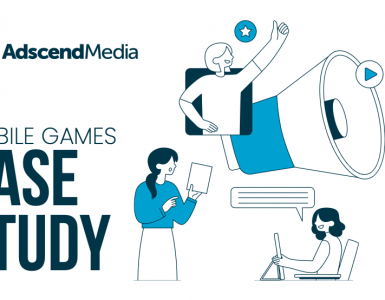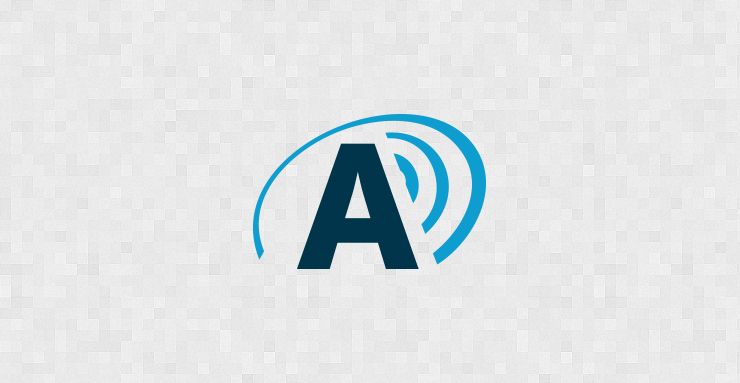Offerwalls have become a key mobile app monetization strategy for countless publishers over the last decade. By enabling users to engage with offers in exchange for rewards, offerwalls provide a way to generate revenue while enhancing the user experience. This unique rewarded ad approach lets users “pay with their time” while unlocking a powerful new revenue stream for your app.
If you’re still learning about offerwall monetization, check out our article on 5 Compelling Reasons to Monetize with an Offerwall to understand why rewarded ads are effective.
Understanding Offerwall Users
Before we dive into the three strategies, it’s important to understand the types of users offerwalls typically monetize. While paying users often generate significant revenue through in-app purchases (IAPs), they usually represent only a small percentage of our user base — typically, around 5% of users account for nearly 48% of IAP earnings.
To monetize the remaining 95% of users, many apps use other ad formats, such as display ads, interstitials, rewarded video, and offerwalls. Display and interstitial ads allow you to monetize freemium users who don’t plan to make purchases, while rewarded video engages users at key moments (e.g. unlocking an extra life in a game) in exchange for 10-30 seconds of their time.
Offerwall users, however, are often non-paying users who are willing to engage more deeply, “paying” with their time by interacting with offers that can provide significant rewards — sometimes even hundreds of dollars’ worth. Many of these users are interested in your premium content but may not yet be ready—or able—to make purchases. By engaging with offerwall ads to access premium content, these non-paying users often become more likely to make purchases later, after experiencing the benefits of your app, thereby increasing both your average revenue per user (ARPU) and lifetime value (LTV).
According to MY.GAMES, offerwalls generally boost revenue by 10-40% for game publishers, demonstrating their value in monetizing non-paying users. They’ve also shared a visual that captures the value of these users in a pyramid:

Moreover, offerwall users have higher retention rates when measured over time, as can be seen here in a visual from Unity:

Maximizing Offerwall Revenue: 3 Key Strategies
Now that we understand how offerwalls engage various types of users, let’s explore three effective strategies to maximize your app’s offerwall revenue: targeted promotions, optimized offerwall placement, and user segmentation. Whether you’re looking to improve user engagement or increase overall revenue, these strategies will help you get the most out of your offerwall.
Targeted Promotions
Why It Matters: Well-timed promotions can drive higher engagement and conversion rates, especially during relevant holidays or events.
How to Do It: Many apps use promotions during specific holidays like Thanksgiving, Christmas, or Valentine’s Day to encourage users to make purchases and access premium features. These holiday-specific promotions help convert non-paying users into paying users and motivate existing paying users to make additional purchases.
To further boost revenue from non-paying users, apps with offerwalls can run similar promotions. Let your non-paying users know that they can earn your in-app purchases (IAPs) more quickly during promo periods by completing offerwall tasks. This can significantly increase ad revenue during promotional campaigns.
For an even more aggressive approach, consider setting up an offerwall promotion where users can earn 25-50% more virtual currency for each completed offer. You can easily adjust your settings with your rewarded ad provider to adjust your currency ratio. For instance, if you usually reward users with 100 points for every $1 of ad revenue, offer 125-150 points during the promo period. Often, these promo periods are most effective when they last at least a few days, ideally a week.
Results: When executed thoughtfully, promotions like these can increase user engagement and drive more ad revenue without diluting the value of your premium content. This approach boosts short-term revenue and can improve your ARPU and LTV over time by converting non-paying users and engaging existing users.
Optimized Offerwall Placement
Why It Matters: Strategic placement of your offerwall can make a huge difference in user interaction and overall revenue. By making your offerwall more accessible and visible, you ensure that more users engage with it, increasing your ad revenue without disrupting the user experience.
How to Do It: The most common placement for an offerwall is within the in-app purchase (IAP) store. However, its exact positioning in the store is crucial. If the offerwall is located below the fold and out of immediate view, users may not even know it exists. Ensure that the wall is prominently placed, with a clear call-to-action like “Earn Credits”, so users immediately understand its value.
Once your offerwall is visible in the IAP store, you should also consider other high-traffic areas of your app. Here are examples of strategic offerwall placement for both game and non-game apps:
-
Game Apps:
- Earn Credits Features: Place the offerwall entry near the in-game credits balance to encourage engagement with offers as an alternative to direct purchases.
Low-Credit Situations: When users run out of in-game currency or items, prompt them to “Earn More Credits” or “Refill Credits” by completing offers. This placement encourages engagement when users need a boost that isn’t ideal for a low-value rewarded video reward like a free life to keep playing that round.
- Earn Credits Features: Place the offerwall entry near the in-game credits balance to encourage engagement with offers as an alternative to direct purchases.
-
Non-Game Apps:
- Streaming Apps: For media or content streaming apps, position the offerwall as a way for users to “Unlock Premium Content” or “Watch Ad-Free.” For instance, if a user runs out of free access to premium content, prompt them to engage with offers to extend their viewing time or access more premium content without paying directly.
- Health & Fitness Apps: In fitness apps that offer guided sessions or advanced workout plans, allow users to unlock premium features or personalized plans by completing offerwall tasks. You could include an offerwall entry after a user finishes a basic workout plan to encourage them to unlock more advanced training options.
- News or Reading Apps: In apps offering articles or e-books, users might hit a paywall or premium content section. Allow them to unlock a certain number of additional articles or books by engaging with offers rather than directly subscribing.
- Educational Apps: For apps offering courses or learning materials, offerwalls can be presented as an alternative way to unlock premium content, such as advanced lessons.
- Dating Apps: Position the wall as a way for users to “Boost Profile Visibility” or “Get More Likes.” When users run out of likes or super likes, prompt them to complete offers to earn more without paying directly.
Results: By positioning your offerwall in high-traffic areas where users already engage with your app’s key functions, you can significantly boost visibility and engagement rates. This leads to higher ad revenue, as the offerwall is introduced when users are looking for ways to earn additional value.
User Segmentation
Why It Matters: Not all users are the same, and segmenting your users allows you to create tailored experiences for different user cohorts, which can significantly boost your in-app ad and IAP revenue. By understanding your users’ behaviors — whether they’re paying or non-paying — you can adjust how often you show offerwalls, making them more relevant to different segments.
How to Do It: User segmentation can be as simple as dividing users into two groups: non-paying users and paying users. However, as your app grows, more advanced segmentation can be done based on factors like engagement, time spent in the app, or frequency of purchases.
-
Non-Paying Users: For non-paying users, offerwalls can be shown more frequently as a way to unlock premium content or features without making direct purchases. This group is more likely seeking ways to engage with your app for free. Consider promoting the offerwall when they reach content they can’t access without paying, or when they run out of free credits or features.
-
Paying Users: Paying users, on the other hand, may prefer a more subtle approach. Since they’ve already demonstrated a willingness to pay for content or features, show the offerwall less frequently. Instead, use it strategically—such as during special promotions—so it feels like an added value.
-
Targeted Notifications: With user segmentation, you can also send targeted push notifications to different cohorts. For example, send a reminder about offerwall promotions to non-paying users, while sending exclusive IAP discounts to paying users. Tailoring these notifications makes them more relevant and likely to convert.
Advanced Segmentation: As you gather more data, you can refine your segments even further. For instance, you might target highly engaged non-paying users with more aggressive offerwall promotions, or create segments based on user location, app usage frequency, or the types of features they interact with most. This level of personalization can further optimize rewarded ad revenue by delivering the right ad unit to the right users at the right time.
Results: By strategically segmenting users and personalizing how you present offerwalls, you can increase engagement and maximize ad revenue. Non-paying users see the wall more often and are more likely to engage with it, while paying users are guided toward more IAPs, with the option to earn from a wall if they choose.
Maximizing Offerwall Revenue with Strategic Approaches
By leveraging targeted promotions, optimized placements, and user segmentation, you can enhance your app’s overall ad revenues. Each of these strategies provides a unique way to engage different segments of your users, improve the user experience, and drive both in-app purchases (IAPs) and ad revenue.
When implemented thoughtfully, these three strategies not only increase engagement and revenue but also enhance overall user satisfaction. As you continue refining these approaches, remember to track user data, test different placements, and adjust your tactics to keep optimizing for success.
Whether your app focuses on gaming, streaming, fitness, or another category, applying these advanced techniques can significantly improve your monetization efforts. Start exploring these strategies today and unlock the full potential of your offerwall revenue.
Adscend Media’s industry leading offerwall allows you to monetize non-paying users while providing a positive, non-intrusive user experience. Whether you’re looking to monetize an app, website, or both, our rewarded ad solutions can help to boost revenue, engagement, retention, and ultimately ARPU and LTV. Sign up to get started or contact us to learn more!












Add comment